Video of the Week:
Succulent Plants for Your Home
Upcoming Events:
January 7, 8 & 9, 2016
St. Joseph, MO
The Great Plains Growers Conference (GPGC) is a combination of two great conferences: Great Plains Vegetable Conference and Mid-America Fruit Conference. The three-day conference features presentations by knowledgeable speakers from throughout the nation. The conference showcases educational information from all five states: Iowa, Kansas, Missouri, Nebraska, and South Dakota, along with vegetable specialists and growers from those states.
Some of the topics covered this year include: Greenhouse and hydroponic production; honey bees, scaling up worskhop, soil health & management, tree fruits, mushrooms, beginning organic, vegetable IPM, technology, equipment, irrigation, small fruit, advanced organic, cut flower, food safety/GAPS and market ready workshop.
The trade show consists of more than 50 exhibitors with the latest seeds, supplies, equipment, and grower information. There will be ample opportunities to visit with other growers, exhibitors, and speakers.
For more information, http://www.greatplainsgrowersconference.org
61st Annual Shade Tree Conference
January 13-15, 2016
Ramada Downtown, Topeka,KS
http://www.hfrr.ksu.edu/doc4428.ashx
RetailWorks
February 4, 2016
Manhattan, KS
Horticulture 2015 Indexed
All of the articles published in Horticulture 2015 are now indexed according to subject. Indexing by subject is a very time consuming undertaking. One of our Johnson County Extension Master Gardeners, Carole Brandt, has completed this task for us the last eight years. Many thanks to Carole in making these past articles much easier to find. You can access the list at http://www.hfrr.ksu.edu/doc4424.ashx. (Ward Upham)
Vegetables:
Starting Onion Plants Indoors
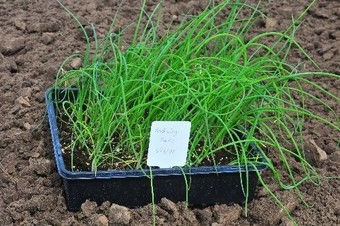
Onion seedlings tend to be spindly with the remains of the seed sticking to the end of a leaf for several weeks. Encourage stockiness by trimming the ends of the leaves when the plants reach 4 to 5 inches tall. Start hardening off the onions in early March by moving the plants to a protected outdoor location. You may have to move them inside temporarily to protect them from extreme cold snaps. (Ward Upham)
Starting Garden Transplants from Seed
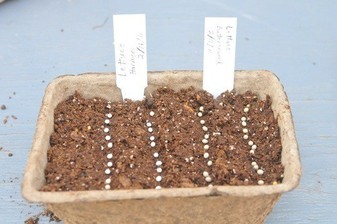
Purchase Recommended, Quality Seed: Start by taking a look at our recommended varieties at http://www.hfrr.ksu.edu/DesktopDefault.aspx?tabid=731 These plants have proven themselves across the state of Kansas and this is a good place to start when deciding what to plant. However, also talk to your neighbors, friends and garden center about what has worked well for them. Obtain your seeds from a reputable source including garden centers and seed catalogs. If choosing seeds from a business that does not specialize in plants, pay special attention to the package date to make sure the seed was packaged for the current year.
Though most seed remains viable for about 3 years, germination decreases as seed ages. See the accompanying article on using old garden seed for more detailed information.
Determine the Date to Seed: There are two pieces of information that needs to be known in order to determine the date to seed transplants: the target date for transplanting outside and the number of weeks needed to grow the transplant. The target date for transplanting the cool-season crops such as broccoli, cabbage, cauliflower and onions are the end of March to the beginning of April.
Warm-season crops like tomatoes, peppers and most annual flowers are usually planted about May 10. There is a companion article in this newsletter listing common plants and the number of weeks needed to grow a transplant.
Sowing Seed: Do not use garden soil to germinate seed as it is too heavy and may contain disease organisms. Use a media made especially for seed germination.
Keep Seed Moist: Seed must be kept moist in order to germinate. Water often enough that the media never dries. Using a clear plastic wrap over the top of the container can reduce the amount of watering needed. Remove the wrap after the seedlings emerge.
Light: Most plants will germinate in either darkness or light but some require darkness (Centurea, Larkspur, Pansy, Portulaca, Phlox and Verbena) and others require light (Ageratum, Browallia, Begonia, Coleus, Geranium, Impatiens, Lettuce, Nicotiana, Petunia and Snapdragon).
All plants require adequate amounts of light once emergence occurs. South facing windows may not provide adequate amounts and so fluorescent fixtures are often used. Suspend the lights 2 to 4 inches above the top of the plants and leave the lights on for 16 hours each day.
Temperature: The temperature best for germination is often higher than what we may find in our homes especially since evaporating moisture can cool the germination media. Moving the container closer to the ceiling (top of a refrigerator) can help but a heating mat is best for consistent germination. A companion article lists common plants and their optimum germination temperature. After plants have germinated, they can be grown at a cooler temperature (65 to 70 degrees during the day and 55 to 60 degrees at night). This will help prevent tall, spindly transplants.
Plant Movement: Plants react to movement. Brushing over the plants with your hand stimulates them to become stockier and less leggy. Try 20 brushing strokes per day. However, brushing will not compensate for lack of light or over-crowding. Plants grown under inadequate light will be spindly regardless of any other treatment.
Hardening Transplants: Plants grown inside will often undergo transplant shock if not hardened off. Plants are hardened off by moving them outside and exposing them to sun and wind before transplanting occurs. Start about two weeks before transplanting and gradually expose the plants to outside conditions. Increase the number of hours and degree of exposure over the two-week period. (Ward Upham)
Using Old Garden Seed
Seed stores best if kept in a cold, dark, dry location. We normally consider seed will remain viable for about 3 years under these conditions though there are exceptions. For example, members of the carrot family (carrots, parsnips and parsley) are short-lived and are usually good for only 1 to 2 years. If you are unsure of viability and have plenty of seed, there is an easy method of determining how good your seed is. Place 10 seeds on a paper towel moistened with warm water and cover with a second moistened towel. Roll up the towels and place inside a plastic bag with enough holes for air exchange but not so many that the towels dry quickly. Place the bag in a warm place such as the top of a refrigerator. Remoisten towels with warm water as needed. After the first week, check for germination. Remove sprouted seed and check again after another week. Add these numbers together to determine the percent germination. (Ward Upham)
Flowers:
Forcing Paperwhite Bulbs
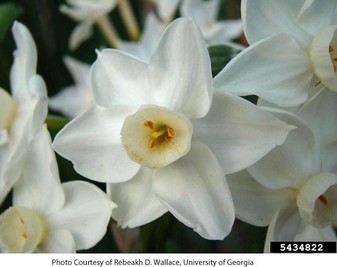
- Use a 3 to 4-inch decorative container that does not have drainage holes. It should be transparent enough that you can see the water level in relation to the bulbs.
- Place 1 to 2 inches of washed gravel, marbles, glass beads or stones in the bottom of the container. We will call the material chosen as “media” for the remainder of the article.
- Place the bulbs on the media so that they are near one another. Add enough media to hold them in place.
- Add enough water that the bottom of the bulb is sitting in water. Do not submerge the bulb. Maintain the water at this level.
It normally takes 4 to 8 weeks for the bulbs to bloom.
Unfortunately, paperwhites often become leggy and fall over. Growing in cooler temperatures (60 to 65 degrees) can help but there is another trick that can be useful and involves using a dilute solution of alcohol. No, this trick did not come from an unknown source on the Internet but Cornell University’s Flower Bulb Research Program. They suggest the following to obtain a plant that is 1/3 shorter than normal. Flower size and longevity are not affected.
- Grow the bulbs as described above until the shoot is green and about 1 to 2 inches above the top of the bulb.
- Pour off the water and replace it with a 4 to 6% alcohol solution.
- Use this solution instead of water for all future waterings.
There are two methods to add this solution. The first is to add the alcohol solution to what is already in the container. Add enough to bring it up to the proper level. The second will give shorter plants. In this second method, pour off all the old solution and replace it with the new each time additional solution is needed.
So, how do we make the alcohol solution? An easy way is to use rubbing alcohol. Rubbing alcohol is usually 70% alcohol and should be mixed with 1 part alcohol with 10 or 11 parts water.
Do not use beer or wine as the sugars present can interfere with normal growth.
The researchers were not sure why this worked but suggested the alcohol made it more difficult for the plants to take up water. This water stress stunted growth but did not affect the flowers. (Ward Upham)
Vegetables and Flowers Seeding Table
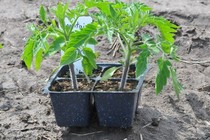
“Starting Plants from Seeds,” HIL-8703
** Temperature in degree F
Contributors: Ward Upham, Extension Associate
To view Upcoming Events: http://tinyurl.com/fswqe
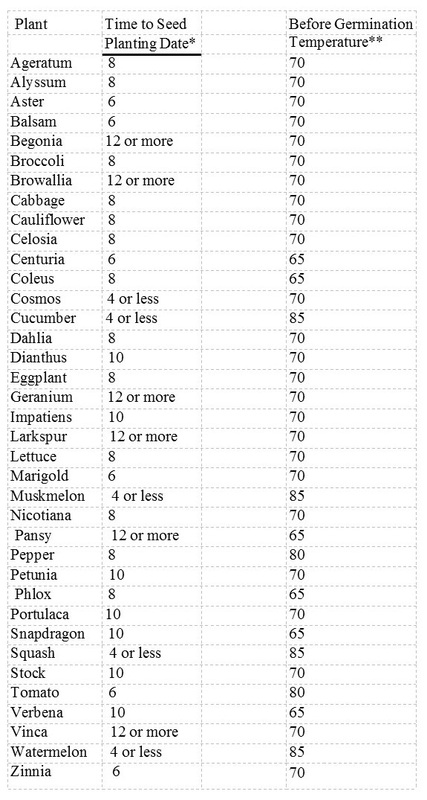
 RSS Feed
RSS Feed
